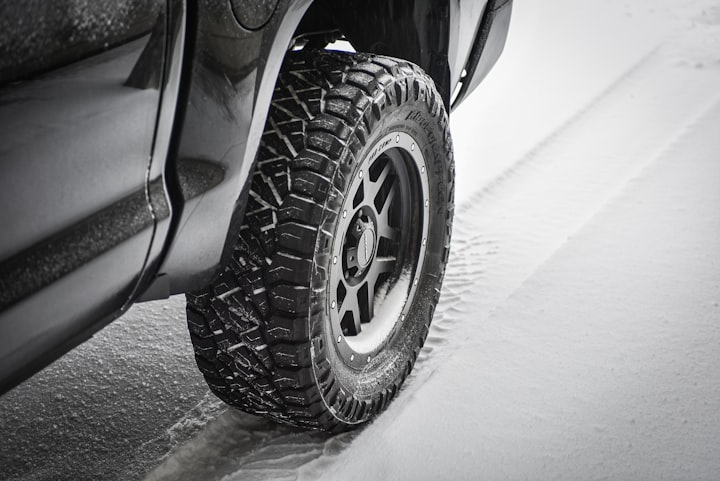
Even though car tyres Stanley are becoming more and more common in the UK, many drivers still don't know exactly what they are for or why they should get installed in a place where it doesn't snow often. In actuality, winter Tyres are for more than just ice and snow. As long as the outside temperature is lower than 7 degrees Celsius, they are also safer than summer tyres in all weather circumstances, even the dry.
What are winter tyres?
Winter tyres are neither ice tyres or even snow tyres, which is the most crucial distinction to make. There are no protruding metal studs of any kind in the tread. Instead, winter tyres are only intended for usage in colder climates and on slicker surfaces. They are undoubtedly far more effective than summer tyres on snow and ice, but they will still offer more traction and grip on a completely dry surface as long as the surrounding temperature is below 7 degrees Celsius. Winter tyres are safer than summer tyres when it's raining since they are also better at removing standing water.
Winter tyres will thus almost probably produce greater grip than summer tyres from the end of November to the beginning of March.
How do winter tyres function?
There are three distinct ways that winter tyres vary from summer tyres. The tread pattern has a far higher number of sipes, or grooves, cut into it than is conventional, which aids the tyre in grabbing onto snow and ice and removing water from the air.
Second, winter tyres are specifically constructed of a silica-rich material, which keeps them pliable and soft even in subfreezing conditions. A summer tyre's rubber becomes incredibly stiff in really cold weather, causing it to slide across the road rather than adhere to it.
The rubber blocks of a winter tyre are also made to vibrate when moving, which means that any snow they may have accumulated will get shaken away. In contrast, a summer tyre will get snow and ice, becoming entirely smooth and absolutely worthless.
What makes winter tyres necessary?
Snow, ice, and cold weather all have an impact on driving and the ability of cars to stay on the road. The primary reason that winter tyres are actually required under UK legislation is for the benefit of traffic safety. Winter tyres' stopping lengths are 25% less in wintery weather than summer tyres' stopping distances.
When the temperature drops, they are more soft and flexible than summer tyres and have superior traction.
When to install winter tyres?
The deadlines for installing and removing winter tyres are not specified by legislation. When the weather is "wintery," which includes when there is black ice, compacted or melting snow, icy spots, or frost, the restrictions really apply year-round.
When should they thus get fitted? Plan ahead! The best course of action is to monitor the weather predictions. The Luxembourg police force generally advises fitting winter tyres from October to Easter. Once the temperature goes below 7° C, tyre performance, including grip and stopping distances, begins to clearly decline, even in non-winter weather situations.
Making sure winter tyres adhere to the law
The law mandates that winter tyres have at least 1.6 mm of tread depth in addition to the mandated "M/S" designation or the Alpine snowflake emblem.
Winter tyres should get replaced as soon as the tread depth is less than 4 mm to guarantee optimal grip and stopping distances. In any case, you should regularly examine the state of your tyres.
UK legislation and winter tyres
Currently, fitting winter tyres during the cold season is not a necessity in the UK. Drivers are usually required by legislation to remove summer tyres on icy roads in other northern European nations, such as Germany. Visitors are subject to that legislation as well. Typically, between October and Easter, German drivers swap to winter tyres.
In certain nations, such as Finland and Sweden, winter tyres must be always installed during the colder months, regardless of the state of the roads.
Differences between all-season, summer, and winter tyres
All-season tyres combine the characteristics of winter and summer tyres for usage all year round. They are mainly designed for nations with temperate temperatures, like the UK. They are usually composed of a material that provides good traction in dry, warm environments without turning stiff and hard in really cold ones. They also feature several sipes carved into the tread, just like winter tyres. Since they can get used in all four seasons, many drivers regard all-season tyres to be the most practical choice.
Whether it is worthwhile to use winter tyres depends on where you live and the weather. Driving in the winter is safer thanks to winter Tyres, which withstand the colder climate.
About the Creator
Sumit Das
Hi i am Sumit from United Kingdom and i am creative writer. I love to write , create graphics, gif etc






Comments
There are no comments for this story
Be the first to respond and start the conversation.